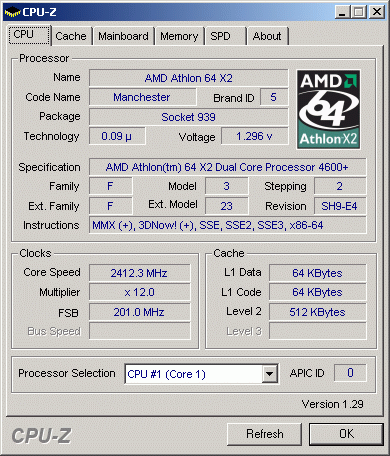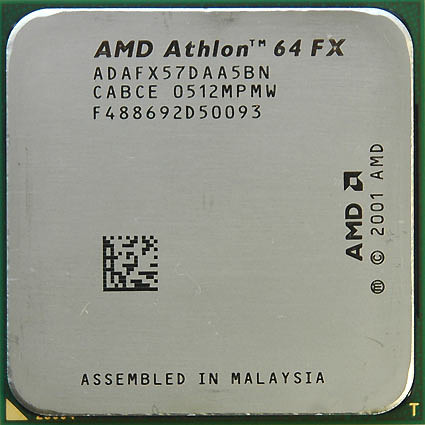The Mother of All CPU Charts 2005/2006
Codenames, Continued
The E6 feature allowed AMD to add another feature to its CPUs, namely the SSE3 instruction set that had been originally introduced with Intel's Prescott core. Interestingly, the Athlon 64 did not benefit from the additional instructions as greatly as the Intel processors. We suspect that this can be traced back to the MMONITOR and MWAIT instructions that are used for thread communication. Since the X2 does not have Hyper Threading functionality, it lacks this feature. At 110 watts, the thermal power loss is also a good 15% lower than that of Intel's Pentium D.
Meanwhile, AMD's dual-core processors are also available with the model numbers 4600+, 4200+ and 3800+, all of which contain only 512 kB of L2 cache (per core). Instead of deactivating part of the cache, AMD produces these processors with the smaller cache right from the start. This reduces the die size from the 199mm² of the Toledo to 147mm²; AMD calls this core Manchester (E4).
Thanks to its comparatively small die size, the Manchester CPU gets by with only 89 watts of heat dissipation. Although this core received a different stepping, namely E4, it nonetheless comes with the same improvements and features as the Toledo core.
One month after the introduction of its dual-core technology, AMD unveiled several new single-core CPUs. With the San Diego (E4), SSE3 was brought into AMD's single-core line. The E4 core is completely identical to one of the halves of the Toledo core. Calling this 2.8 GHz processor the Athlon 64 FX-57, AMD was able to overtake Intel's Pentium Extreme Edition 840 by more than 30%. Despite its better performance, the processor is about 10% less expensive than its competitor from Intel. The San Diego core is also found in the Athlon 64 FX-55, 4000+ and 3700+.
Faster than Intel: The FX-57 takes the lead.
Starting in June, the low-cost market was also able to enjoy the benefits of SSE3 technology as AMD introduced the Venice core. It is available in an E3 and an E6 stepping and can be found in the 3800+, 3500+, 3200+, and 3000+ models. However, these CPUs only feature 512 kB of L2 cache. Thanks to its 90 nm technology, this processor can be used to build computers that are both powerful and very quiet.
We used the Asus A8N-SLI for all benchmarks of the Athlon 64 and FX CPUs. This board is built around NVIDIA's nForce 4 SLI chipset.
Get Tom's Hardware's best news and in-depth reviews, straight to your inbox.
Board: Asus A8N-SLI Premium (Nvidia nForce 4 SLI)
RAM: Dual DDR400 (PC3200)
Current page: Codenames, Continued
Prev Page Codenames, Continued Next Page Impressions And HighlightsTom's Hardware is the leading destination for hardcore computer enthusiasts. We cover everything from processors to 3D printers, single-board computers, SSDs and high-end gaming rigs, empowering readers to make the most of the tech they love, keep up on the latest developments and buy the right gear. Our staff has more than 100 years of combined experience covering news, solving tech problems and reviewing components and systems.



